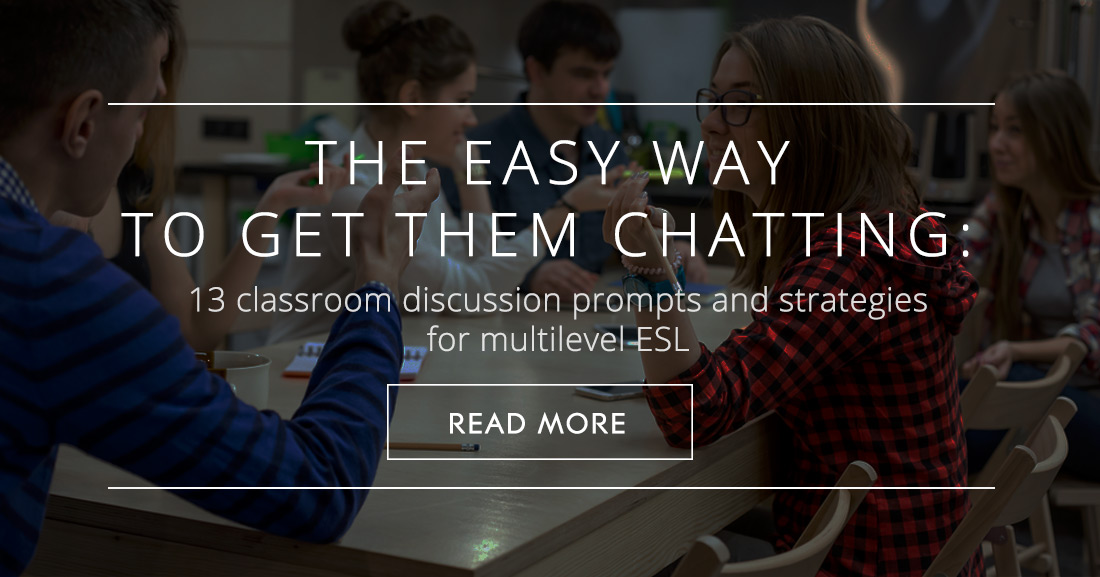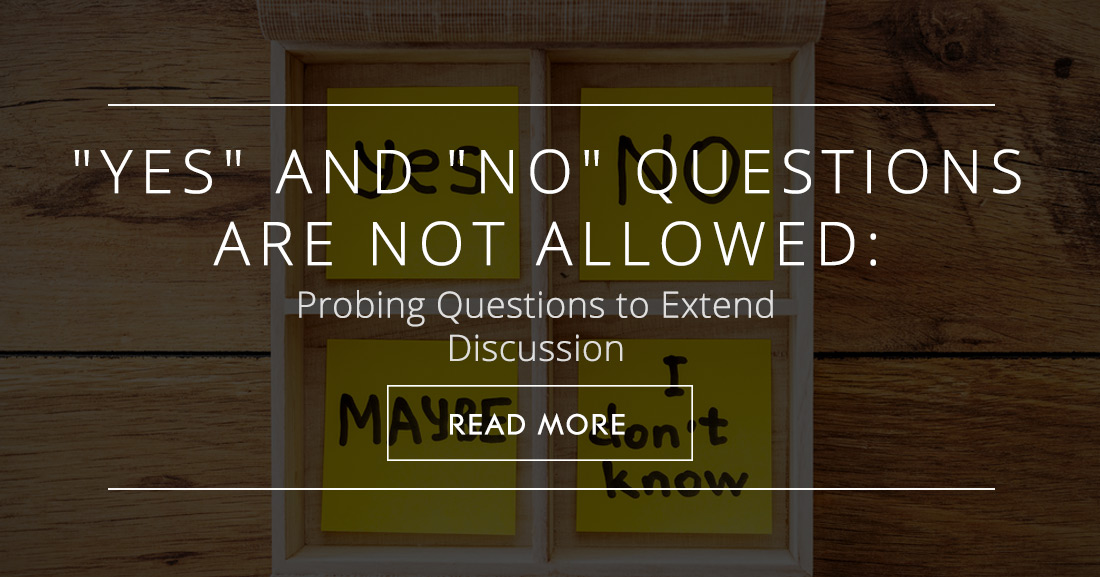The Easy Way To Get Them Chatting: 13 Classroom Discussion Prompts and Strategies for Multilevel ESL


First there is the problem of getting their attention, then directing them to the topic, raising interest in the topic, getting them to respond, and so forth.
The next problem is that when a question is posed, by the teacher or the classmate, the student will often answer only “yes” or “no.” This problem is twofold:
With that in mind, the instructor can employ certain strategies to keep students from asking yes/no questions and answering with them.
These questions have the possibility of being answered only “yes” or “no.” Instead of, for example, asking “Did you like the film/story/essay?” etc., ask, or at least follow up with, “Why did or didn’t you like the film/story/essay?”
These are the “wh” questions. A step above the “yes/no” question is the information questions of “who/what/where/when/. Students who speak English as their second language may need training in how to answer these. Teach students how to respond to an information question. Students who have no trouble understanding and answering information questions, those who speak English with native proficiency, still will often get the answers wrong due to not having engaged with the text enough. Having to answer information questions/comprehension questions will force students to go back and reread the text and teach more close readings of materials beyond skimming.
Information questions, while they are a step above the yes/no, are still very limited in that they can be answered in short responses and skim only the surface meaning of a text. Go beyond in focusing on the “why” questions and force analysis beyond what is obvious in the text. Write prompts that force deeper analysis or personal connections: “What do you think about— “, “How does this relate to your life?” Or analyze the cause/effect sequence of actions and events in the reading, and so forth.
Give students time to answer a question. If you begin with a general question “What did you think of the film?”, and students don’t immediately respond (It’s typical that they don’t), wait until someone begins speaking. This serves two purposes: it demonstrates that students are expected to engage, and it gives them time to form a response. If students after a time still don’t speak, you can begin asking students directly: “Saul, what are your thoughts?” and if Saul doesn’t answer, you can then further prompt, “Chelsea, can you help out Saul?” Eventually someone will answer. If truly desperate, you can answer yourself and get the discussion going that way, and often that is all it takes for other students to begin jumping in and for the conversation to take off.
Even well-constructed questions can fall flat if students are not taught how to follow up and create a true dialogue. “What is the setting of Romeo and Juliet?” “Verona during the Renaissance.” “Okay.” End of discussion. The student dutifully writes the answer on his discussion form, and the conversation is over. Model and teach follow up questions: “How does the setting affect the events of the play?” and “What effect does setting the story in a different era—as in ‘West Side Story’—have?” Write these follow up questions yourself and teach students to extend the discussion on their own. Require also that they write more than a word or two of notes for the discussion responses, which will require more probing and responding—true discussion.
Once students have been taught how to ask and respond to questions, the discussion should be turned over to them. The students should be given the responsibility of reading a text or watching a film, and so forth, and developing their own questions they want to bring to discussion. They should have modeled for them how to lead and sustain discussions by posing a question, prompting peers to join in, and asking follow up questions.
There are methods to start a dialogue beyond questions. One way is the writing prompt: throw out an issue and ask students to write about it without stopping or attention to grammar for five minutes or other specified time: e.g.: Write your thoughts on gun control for ten minutes. Students will then be prepared with some ideas to bring to the discussion.
The television and internet have a wealth of resources with varying types of dialogue: TV talk shows, for example, have a various of models of discussions on issues, such as “60 Minutes” and other news programs.
The role of a teacher is to teach students not to need her. Once the discussion begins to take off, the instructor should fade from the process, intervening only when truly necessary (the discussion is stalling or has gone off track; personal conflict has broken out between students, as sometimes can happen during heated issues, and so forth.)
Good discussions require more than putting students in groups with a sheet of questions and telling them to talk. Rather, a good discussion requires the right kind of discussion prompts and training of students in how to have a discussion.